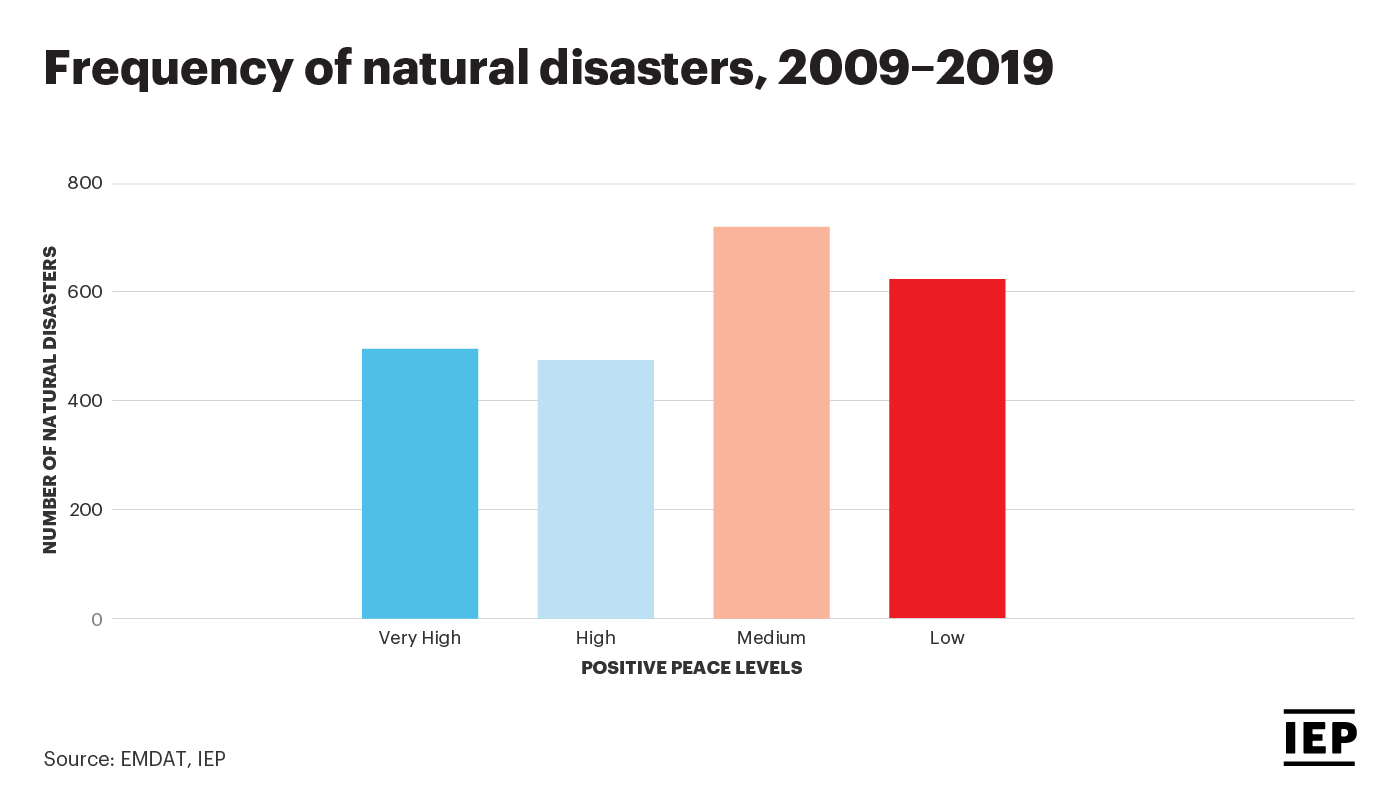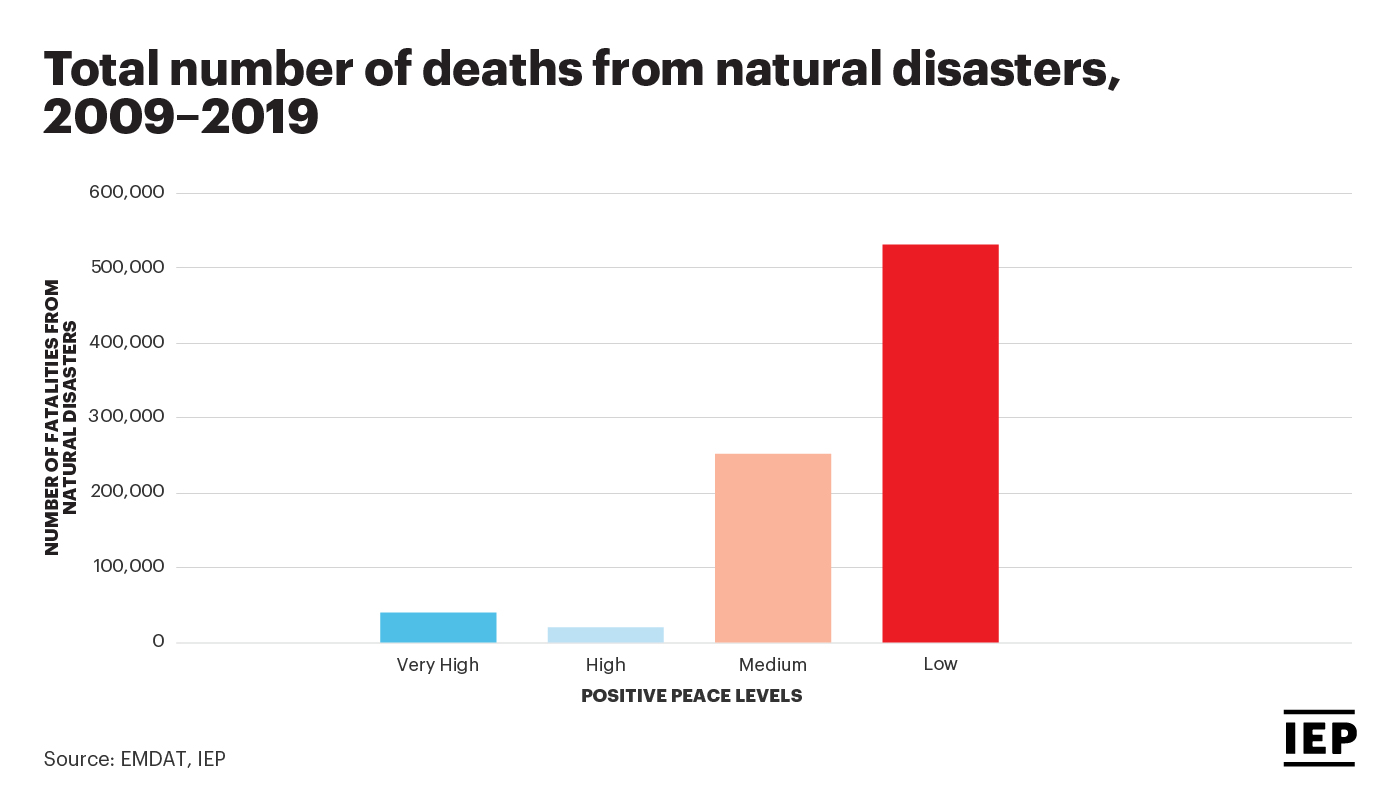Reporting on natural disaster statistics from 2009-2019 including fatalities and frequency of disaster events – with an analysis through the lens of positive peace.
Research from the Institute for Economics & Peace (IEP) shows what difference Positive Peace makes during a disaster.
Countries at lower levels of Positive Peace experience far more fatalities as a result of natural disasters, despite experiencing a similar number of natural disaster events as countries with higher levels of Positive Peace.
According to IEP, countries with weak Positive Peace have a fatality ratio of 13:1 compared to high Positive Peace environments, while the frequency of natural disasters is much closer at 6:5.


Natural disasters are the most prevalent type of exogenous shock to affect countries and as the effects of ecological degradation and climate change accelerate, so too may the frequency and impact of natural disasters.
Between 2005 and 2015, there were over 2,400 natural disasters in 196 countries affecting more than 1.8 billion people. An exogenous shock is an event that originates from forces outside a nation’s boundaries, compared to an endogenous shock, which arises from within a nation’s political and economic system, or domestic social issues, cultural differences.
Natural disasters occur all over the world. While their frequency and intensity are outside the control of policymakers, authorities and governments do have control over their preparedness and planned responses.
Positive Peace — of the attitudes, institutions and structures — within a society, such as social cohesion, economic conditions and the quality of infrastructure, will impact the outcomes of these disasters, especially in terms of lives lost.
which all influence their ability to respond to stresses induced by climate.